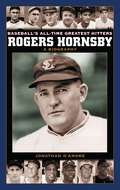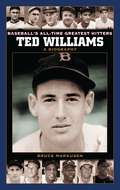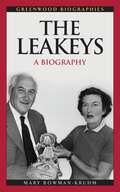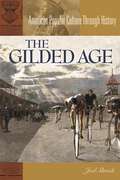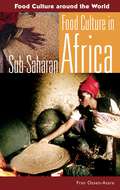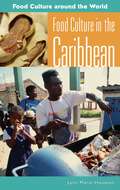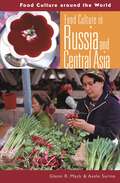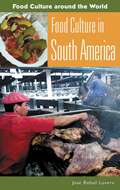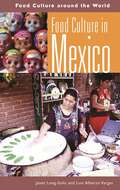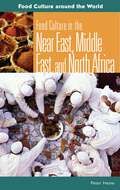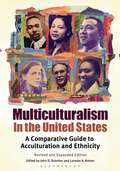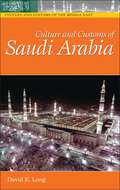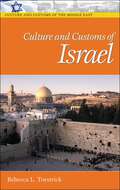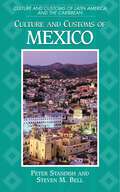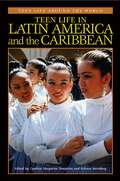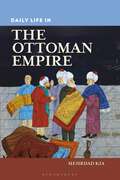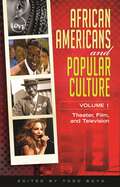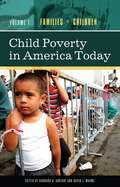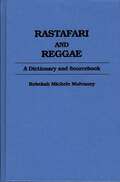- Table View
- List View
Rogers Hornsby: A Biography (Baseball's All-Time Greatest Hitters)
by Jonathan D'AmoreRogers Hornsby has the highest career batting average of any right-handed hitter and the second highest career mark overall. The Rajah won seven batting titles and hit over .400 three times. He was also one of baseball's most successful player-managers, leading the St. Louis Cardinals to a historic World Series triumph over the Yankees in 1926. Hornsby had an unrivaled passion for baseball; as a young player, he once even donned a disguise to play in a women's league. But his unyielding drive to succeed often alienated him from lesser players, and his penchant for the racetrack made him powerful enemies in baseball's higher ranks. Jonathan D'Amore presents a fascinating look at this outstanding hitter and complicated man.It has been said that hitting a baseball is the hardest thing in professional sports. Baseball's All-Time Greatest Hitters presents biographies on Greenwood's selection for the 12 best hitters in Major League history, written by some of today's best baseball authors. These books present straightforward stories in accessible language for the high school researcher and the general reader alike. Each volume includes a timeline, bibliography, and index. In addition, each volume includes a Making of a Legend chapter that analyses the evolution of the player's fame and (in some cases) infamy.
Ted Williams: A Biography (Baseball's All-Time Greatest Hitters)
by Bruce MarkusenThe last player to hit .400 in the Major Leagues, Ted Williams approached hitting as both an art and a science. Through his discipline, drive, and extraordinarily keen eyesight, "The Splendid Splinter" became the best hitter in baseball. From his early days as a cocksure rookie for the Boston Red Sox, through his two Triple Crown seasons, six batting titles, his service in two wars, and his tenure as a Major League manager, Ted Williams forged an indelible image in the minds of baseball fans. Yet Williams's public resentment toward fans and, especially, the media, made him few friends. Bruce Markusen presents the brilliant and often embittered career of the man whose mission was to become the greatest hitter of all time. A timeline, bibliography, and narrative chapter on the making of Williams' legend enhance this biography.It has been said that hitting is the hardest thing to do in professional sports. Baseball's All-Time Greatest Hitters series presents biographies on Greenwood's selection for the twelve best hitters in Major League history, written by some of today's best baseball authors. These books present straight forward stories in accessible language for the high school researcher and the general reader alike.
The Leakeys: A Biography (Greenwood Biographies)
by Mary Bowman-KruhmThree generations of Leakeys have dug in East Africa for fossil evidence that answers questions about human origins. Louis and Mary, husband and wife, began what would turn into decades of research and fieldwork, often disproving common theories and beliefs of the time. Son Richard followed in his parents' foot steps, along with his wife Meave, and made spectacular finds as well. Today, Louise, the oldest daughter of Richard and Meave, continues the family tradition with fieldwork in northern Kenya.The Leakey family's achievements have had an enormous impact on our knowledge of human origins and evolution. This biography describes their life in detail, including their discoveries, publications, controversies, and legacy. A timeline, glossary, and bibliography of print and electronic sources supplement the material.
The Gilded Age (American Popular Culture Through History)
by Joel ShrockThe Gilded Age—the time between Reconstruction and the Spanish-American War—marked the beginnings of modern America. The advertising industry became an important part of selling the American Dream. Americans dined out more than ever before, and began to take leisure activities more seriously. Women's fashion gradually grew less restrictive, and architecture experienced an American Renaissance. Twelve narrative chapters chronicle how American culture changed and grew near the end of the 20th century. Included are chapter bibliographies, a timeline, a cost comparison, and a suggested reading list for students. This latest addition to Greenwood's American Popular Culture Through History series is an invaluable contribution to the study of American popular culture.American Popular Culture Through History is the only reference series that presents a detailed, narrative discussion of U.S. popular culture. This volume is one of 17 in the series, each of which presents essays on Everyday America, The World of Youth, Advertising, Architecture, Fashion, Food, Leisure Activities, Literature, Music, Performing Arts, Travel, and Visual Arts
Food Culture in Sub-Saharan Africa (Food Culture around the World)
by Fran Osseo-AsareEast African, notably, Ethiopian, cuisine is perhaps the most well-known in the States. This volume illuminates West, southern, and Central African cuisine as well to give students and other readers a solid understanding of how the diverse African peoples grow, cook, and eat food and how they celebrate special occasions and ceremonies with special foods. Readers will also learn about African history, religions, and ways of life plus how African and American foodways are related. For example, cooking techniques such as deep frying and ingredients such as peanuts, chili peppers, okra, watermelon, and even cola were introduced to the United States by sub-Sahara Africans who were brought as slaves.Africa is often presented as a monolith, but this volume treats each region in turn with representative groups and foodways presented in manageable fashion, with a truer picture able to emerge. It is noted that the boundaries of many countries are imposed, so that food culture is more fluid in a region. Commonalities are also presented in the basic format of a meal, with a starch with a sauce or stew and vegetables and perhaps some protein, typically cooked over a fire in a pot supported by three stones. Representative recipes, a timeline, glossary, and evocative photos complete the narrative.
Food Culture in the Caribbean (Food Culture around the World)
by Lynn M. HoustonFood in the Caribbean reflects both the best and worst of the Caribbean's history. On the positive side, Caribbean culture has been compared with a popular stew there called callaloo. The stew analogy comes from the many different ethic groups peacefully maintaining their traditions and customs while blending together, creating a distinct new flavor. On the negative side, many foods and cooking techniques derive from a history of violent European conquest, the importation of slaves from Africa, and the indentured servitude of immigrants in the plantation system. Within this context, students and other readers will understand the diverse island societies and ethnicities through their food cultures. Some highlights include the discussion of the Caribbean concept of making do—using whatever is on hand or can be found—the unique fruits and starches, the one-pot meal, the technique of jerking meat, and the preference for cooking outdoors.The Caribbean is known as the cradle of the Americas. The Columbian food exchange, which brought products from the Caribbean and the Americas to the rest of the world, transformed global food culture. Caribbean food culture has wider resonance to North, Central, and South America as well. The parallels in the food-related evolution in the Americas include the early indigenous foods and agriculture; the import and export of foods; the imported food culture of colonizers, settlers, and immigrants; the intricacies of defining an independent national food culture; the loss of the traditional agricultural system; the trade issues sparked by globalization; and the health crises prompted by the growing fast-food industry. This thorough overview of island food culture is an essential component in understanding the Caribbean past and present.
Food Culture in Russia and Central Asia (Food Culture around the World)
by Glenn R. McNamara Asele SurinaRussia and the newly independent states of Central Asia are struggling to reassert or create national identities and are receiving fresh attention from the West. After decades of oblivion, the vast Eurasian continent is once again divulging its intense cultural heritage and foodways to the international community. The diversity of food cultures within the former Soviet Union, with more than 100 distinct nationalities, is overwhelming, but this book brilliantly distills the main elements of contemporary cuisine and food-related customs for students and foodies. Vibrant descriptions of the legacy of the Silk Road; the classic foods such as kasha, pirogi, non (flatbread), pickles, and shashlyk (shish kebab); the over-the-top Moscow theme restaurants; and meals at the dacha and tea time are just some of the highlights.Russia and the newly independent states of Central Asia are struggling to reassert or create national identities and are receiving fresh attention from the West. After decades of oblivion, the vast Eurasian continent is once again divulging its intense cultural heritage and foodways to the international community. The diversity of food cultures within the former Soviet Union, with more than 100 distinct nationalities, is overwhelming, but Food Culture in Russia and Central Asia brilliantly distills the main elements of contemporary cuisine and food-related customs for students and foodies. Vibrant descriptions of the legacy of the Silk Road; the classic foods such as kasha, pirogi, non (flatbread), pickles, and shashlyk (shish kebab); the over-the-top Moscow theme restaurants; and meals at the dacha and tea time are just some of the highlights.After centuries of contact and conflict among peoples of Eurasia, Russian and Central Asian cuisines and culinary cultures have much in common. To understand one, the other must be considered as well. Russia and Central Asia cuisines share many ingredients, dishes, and customs. This volume strives to emphasize the evolving and multifaceted nature of the food cultures. Readers will be able to appreciate the ingredients, cooking methods, and traditions that make up the Eurasian foodways.
Food Culture in South America (Food Culture around the World)
by José Rafael LoveraThis volume tells the story of the South Americans and their history through a survey of their food culture. Food in the various countries differs in some ways because of cultural heritage, cooking techniques, and geography, here divided into four zones. The traditions of the primary groups—Indians, Europeans, and Africans—and their five centuries of mixing have still resulted in a stable food culture. The foods of the Indians before European contact still play an important role, along with other foods brought by successive immigrant groups. Europeans tried to establish their staples, wheat and wine, with little success. Many dishes, cooking methods, and food habits have survived with little modification since time immemorial.Students and other readers will learn much about the South American foodways in daily life today, with special attention paid to historical perspective and any rural and urban differences. For example, in all the major cultural groups, food preparation and cooking have always been women's work, with the exception of the meat roast (asado) by llaneros and gauchos. The rise of the cooking profession is discussed as well. A fascinating look at the daily meal schedule includes insight in to how the European conquerors imposed their eating habits and encouraged overeating, with the abundance found in the New World. Modern life is shown to affect where people eat, as buying meals, often from street vendors, during the workday has become more of a necessity. The survey includes a discussion of special occasions, including agricultural celebrations and Catholic feasts with indigenous elements. The overview is completed by a chapter on diet and health, covering such topics as botanical knowledge and science and an assessment of the nutritional value of the South American staples. Classic recipes from many of the countries and illustrations complement the narrative.
Food Culture in Mexico (Food Culture around the World)
by Janet Long-Solis Luis A. VargasSince ancient times, the most important foods in the Mexican diet have been corn, beans, squash, tomatillos, and chile peppers. The role of these ingredients in Mexican food culture through the centuries is the basis of this volume. In addition, students and general readers will discover the panorama of food traditions in the context of European contact in the sixteenth century—when the Spaniards introduced new foodstuffs, adding variety to the diet—and the profound changes that have occurred in Mexican food culture since the 1950s. Recent improvements in technology, communications, and transportation, changing women's roles, and migration from country to city and to and from the United States have had a much greater impact.Their basic, traditional diet served the Mexican people well, providing them with wholesome nutrition and sufficient energy to live, work, and reproduce, as well as to maintain good health. Chapter 1 traces the origins of the Mexican diet and overviews food history from pre-Hispanic times to recent developments. The principal foods of Mexican cuisine and their origins are explained in the second chapter. Mexican women have always been responsible for everyday cooking, including the intensive preparation of grinding corn, peppers, and spices by hand, and a chapter is devoted to this work and a discussion of how traditional ways are supplemented today with modern conveniences and kitchen aids such as blenders and food processors. Surveys of class and regional differences in typical meals and cuisines present insight into the daily lives of a wide variety of Mexicans. The Mexican way of life is also illuminated in chapters on eating out, whether at the omnipresent street stalls or at fondas, and special occasions, including the main fiestas and rites of passage. A final chapter on diet and health discusses current health concerns, particularly malnutrition, anemia, diabetes, and obesity.
Food Culture in the Near East, Middle East, and North Africa (Food Culture around the World)
by Peter HeineThe similar cuisines of the Near East, Middle East, and North Africa stem from ancient cultures and variable climates, ranging from Mediterranean to desert. The major monotheistic religions developed in the Middle East, and students and other readers will learn how religious strictures on food and drink continue to play an important role in eating habits there today for Muslims, Jews, and Christians. Most of the population in the regions is Arab, and therefore the emphasis in this volume is mainly on the Arab Muslim food cultures. The impact of colonialism, globalization, and modernization of the foodways is also discussed in the topical chapters.This thorough overview provides huge insight into the lives of everyday people in the regions through their food culture. One chapter describes the major foodstuffs and how they are used. Another discusses gender roles and cooking, the use of cookbooks, and details the typical kitchen and its contents, from appliances to utensils. A chapter on typical meals shows the daily rituals of the various peoples. The Eating Out chapter provides a fascinating look at the workings and décor of small, traditional restaurants, the popularity of picnics, and more. Next, food in the context of religious holidays and life-cycle celebrations is discussed. Finally, traditional folk and modern beliefs about diet and health round out the coverage.
The Regions of Germany: A Reference Guide to History and Culture (Non-ser.)
by Dieter K. BuseThis is a timely and unique overview of the 16 diverse federal states that make up the reunified Germany. The essential data for each state is provided in this easy-to-use reference. The demographics, geography, history, recent politics, economy, architecture, and noteworthy sites, people and culture, memorial sites, and traditional cuisine are surveyed in turn. This is an invaluable resource for students studying German and Germany, travelers, and teachers.A clear introduction explains the new Germany in historical and regional context. It has been claimed that Germany is a post-national society, but regions are still a primary basis of identity for many Germans and one of the main references points in daily life and politics. Part of Germany's reconstruction came through re-creation and identification with historically remolded regions. This work offers a needed summary of the results thus far.
Multiculturalism in the United States: A Comparative Guide to Acculturation and Ethnicity (Non-ser.)
by John D. Buenker Lormen A. RatnerInterest in ethnic studies and multiculturalism has grown considerably in the years since the 1992 publication of the first edition of this work. Co-editors Ratner and Buenker have revised and updated the first edition of Multiculturalism in the United States to reflect the changes, patterns, and shifts in immigration showing how American culture affects immigrants and is affected by them. Common topics that helped determine the degree and pace of acculturation for each ethnic group are addressed in each of the 17 essays, providing the reader with a comparative reference tool. Seven new ethnic groups are included: Arabs, Haitians, Vietnamese, Koreans, Filipinos, Asian Indians, and Dominicans. New essays on the Irish, Chinese, and Mexicans are provided as are revised and updated essays on the remaining groups from the first edition.The contribution to American culture by people of these diverse origins reflects differences in class, occupation, and religion. The authors explain the tensions and conflicts between American culture and the traditions of newly arrived immigrants. Changes over time that both of the cultures brought to America and of the culture that received them is also discussed. Essays on representative ethnic groups include African-Americans, American Indians, Arabs, Asian Indians, Chinese, Dominicans, Filipinos, Germans, Haitians, Irish, Italians, Jews, Koreans, Mexicans, Poles, Scandinavians, and the Vietnamese.
Culture and Customs of Saudi Arabia (Culture and Customs of the Middle East)
by David E. LongSaudi Arabia is a young nation with an ancient history. It is one of the most conservative traditional societies in the world grappling with the impact of modernization wrought by the influx of great oil wealth beginning only in the mid twentieth century. Saudi culture is in constant flux, and the culture gap between the West and Saudi Islamic culture is wide. Culture and Customs of Saudi Arabia is the first cultural overview of country and provides timely, authoritative insight into a major Middle Eastern power.The Saudis are a proud people with a closed society, but circumstances have caused them to play an important role in current world affairs. The author has lived and worked in Saudi Arabia and has extensively used his contacts there to provide up-to-date material. Saudi culture developed through age-old interactions between the Arabian peoples and their harsh desert environment. Saudi Arabia is the birthplace of Islam, and the basic Islamic values of Saudi culture have remained to this day. The themes of an ancient desert society infused with Islam values on a collision course with modernity are interplayed throughout chapters on the land, people, and history, traditional Islamic culture and modernization, the extended family and gender roles, cuisine and dress, social customs, rites of passage, and holidays, communication and mass media, and artistic expression. Color photos and a map, chronology, and glossary round out the narrative.
Culture and Customs of Italy (Culture and Customs of Europe)
by Charles L. KillingerAmericans have a voracious appetite for Italy. It remains a primary destination for travel, art history, cuisine, and more. Like no other source, Culture and Customs of Italy engagingly explains the scope of Italy and Italians today to students and general readers in one volume. As well, this book provides the needed context to understand the enormous contributions of Italian Americans in shaping the cultural heritage and current popular culture of the United States.It clearly summarizes the land, people, and history and relates the highlights of a culture that has excelled in so many areas, such as food, sports, literature, the arts, architecture and design, and cinema. The powerful roles of religion and thought, family and gender, holidays, leisure, and media in Italian life are treated in-depth in individual chapters as well. Crucial regional aspects and historical framing of all topics add to the authoritativeness. A chronology, glossary, photos, and maps round out the coverage.
Culture and Customs of Israel (Culture and Customs of the Middle East)
by Rebecca L. TorstrickStudents and other readers looking to more fully understand and appreciate Israelis of all backgrounds and their ways of life and culture now have a solid source of engaging, balanced, and accurate information. Israel's brief, turbulent history and the Arab-Israeli conflict are always taken into account in the narrative; however, the emphasis here is nonpolitical and encompassing of the heterogenous culture of its citizens, including Jews, Arabs, Druze, and others. The predominant Jewish culture itself is multicultural, with immigrants from all over the world.Israel, a tiny state about the size of New Jersey, weighs on the consciousness of the world more than it might small land mass might seem to merit. Located at the junction of Europe, Asia, and Africa, Israel has been a natural trade and migration route since prehistoric times. The region is also the birthplace of monotheism and an important religious site for Jews, Christians, and Muslims worldwide. Culture and Customs of Israel is the first in-depth survey available and comes at a particularly crucial juncture in history, as the balanced perspective adds a needed cultural dimension. Narrative chapters provide a clear overview of the history and religious nexus and discuss the crucial roles of literature and media to the citizens, issues in Israeli art and identity, the diversity in cuisine, a surprisingly traditional view of gender roles, social customs for all ethnicities, and the role of music and dance in nation building. A volume map, photos, chronology, and glossary complement the text.
Culture and Customs of Mexico (Culture and Customs of Latin America and the Caribbean)
by Peter Standish Steven M. BellMexico, with some 90 million people, holds a special place in Latin America. It is a large, complex hybrid, a bridge between North and South America, between the ancient and the modern, and between the developed and the developing worlds. Mexico's importance to the United States cannot be overstated. The two countries share historical, economic, and cultural bonds that continue to evolve. This book offers students and general readers a deeper understanding of Mexico's dynamism: its wealth of history, institutions, religion, cultural output, leisure, and social customs.
Teen Life in Latin America and the Caribbean (Teen Life around the World)
by Cynthia Tompkins Kristen SternbergTeens in Latin America and the Caribbean generally face a difficult path to adulthood. Poverty and unemployment, violence, political instability, and emigration are frequently the norm in their native countries. Those from poorer families must often work as well as attend school, and opportunities for higher education and good jobs are limited. Wealthier teens, on the other hand, are sheltered from harshness and enjoy private schools, vacations abroad, and access to American consumer products. Yet family is important no matter what the class, and most of these teens share a love of parties, music, and current fashions.Latin America and the Caribbean are important regions to the United States, since large numbers of Americans can trace their roots there. Teen Life in Latin America and the Caribbean allows U.S. teens to understand the unique challenges and opportunities of teens in 15 Latin American or Caribbean countries. Photos complement the text.
The Salvadoran Americans (The New Americans)
by Carlos B. CordovaSalvadorans and other Central Americans have a strong presence in the United States because of the recent civil wars, natural disasters, and resulting economic downturns in the region. Most fled the right-wing death squads that were funded by the Reagan and first Bush Administrations and that targeted civilian populations in the 1980s and 1990s. The war in El Salvador left more than 80,000 people dead and more than 9,000 disappeared. In The Salvadoran Americans, readers will understand the fuller context of Salvadoran and Central American immigration to the United States and how these new Americans are adjusting to and contributing to U.S. society. The land of El Salvador and its demography, language, history, including the war and Peace Accords, culture, and religion are briefly surveyed to begin. A major section then covers the immigration laws and status of the refugees once they arrived. The reasons for emigration and waves of migrations of Central Americans since the 1870s are explained further. Recent demographics offer concrete numbers to better analyze the new populations. Other chapters cover adjustment and integration issues, emphasizing family and community influences. Employment, political, health, and youth issues, including gang participation, are discussed. The contributions to U.S. society and culture, including participation in the labor force, food, and artistic output, as well as profiles of noted Salvadorans in the United States, round out the narrative.
Architecture of England, Scotland, and Wales (Reference Guides to National Architecture)
by Nigel R. JonesThe British terrain is a gold mine for the student of architecture. Ranging in era from ancient times to the present day—from Stonehenge to the Millennium Dome—this volume's 76 entries include palaces, castles, bridges, churches, country houses, and various public buildings and monuments, as well as such well-known features of British architecture and design as terraced houses, suburban semi-detached houses, and public telephone kiosks. Detailed yet accessible to nonspecialist readers, the alphabetical entries also provide cross-references and lists of additional information sources in both print and electronic formats. Appendixes list the entries by location, architectural style, and architect/designer; explain the defining characteristics of major British architectural styles; and discuss the importance of the Crown, peerage, and Parliament in British architectural history. Besides a detailed subject index, the volume includes a timeline, a general bibliography, a glossary of architectural terms, and an introduction that traces the development of British architecture from prehistoric and Roman times to the 21st century.Written by an associate professor of architecture at Oklahoma State University, Architecture of England, Scotland, and Wales, part of Greenwood's Reference Guides to National Architecture series, presents architectural biographies of these countries' most famous and significant structures.
Daily Life in the Ottoman Empire (The Greenwood Press Daily Life Through History Series)
by Mehrdad KiaThis book provides a general overview of the daily life in a vast empire which contained numerous ethnic, linguistic, and religious communities.The Ottoman Empire was an Islamic imperial monarchy that existed for over 600 years. At the height of its power in the 16th and 17th centuries, it encompassed three continents and served as the core of global interactions between the east and the west. And while the Empire was defeated after World War I and dissolved in 1920, the far-reaching effects and influences of the Ottoman Empire are still clearly visible in today's world cultures.Daily Life in the Ottoman Empire allows readers to gain critical insight into the pluralistic social and cultural history of an empire that ruled a vast region extending from Budapest in Hungary to Mecca in Arabia. Each chapter presents an in-depth analysis of a particular aspect of daily life in the Ottoman Empire.
African Americans and Popular Culture [3 volumes]: [3 volumes] (Non-ser.)
by Todd BoydThe African American influence on popular culture is among the most sweeping and lasting this country has seen. Despite a history of institutionalized racism, black artists, entertainers, and entrepreneurs have had enormous impact on American popular culture. Pioneers such as Oscar Michaeux, Paul Robeson, Satchel Paige, Josh Gibson, Langston Hughes, Bill Bojangles Robinson, and Bessie Smith paved the way for Jackie Robinson, Nina Simone, James Baldwin, Bill Russell, Muhammad Ali, Sidney Poitier, and Bill Cosby, who in turn opened the door for Spike Lee, Dave Chappelle, Dr. Dre, Jay-Z, Tiger Woods, and Michael Jordan. Today, hip hop is the most powerful element of youth culture; white teenagers outnumber blacks as purchasers of rap music; black-themed movies are regularly successful at the box office, and black writers have been anthologized and canonized right alongside white ones. Though there are still many more miles to travel and much to overcome, this three-volume set considers the multifaceted influence of African Americans on popular culture, and sheds new light on the ways in which African American culture has come to be a fundamental and lasting part of America itself.To articulate the momentous impact African American popular culture has had upon the fabric of American society, these three volumes provide analyses from academics and experts across the country. They provide the most reliable, accurate, up-to-date, and comprehensive treatment of key topics, works, and themes in African American popular culture for a new generation of readers. The scope of the project is vast, including: popular historical movements like the Harlem Renaissance; the legacy of African American comedy; African Americans and the Olympics; African Americans and rock 'n roll; more contemporary articulations such as hip hop culture and black urban cinema; and much more. One goal of the project is to recuperate histories that have been perhaps forgotten or obscured to mainstream audiences and to demonstrate how African Americans are not only integral to American culture, but how they have always been purveyors of popular culture.
Child Poverty in America Today [4 volumes]: [4 volumes]
by Barbara A. Arrighi David J. MaumeIn a 2004 study by the Annie E. Casey, Ford, and Rockefeller Foundations it was reported that a large number of American families are currently faring poorly in their struggle to provide for themselves. Low-income and poor families were found to contain one-third of all of the children in American working families. Low-wage jobs without benefits mean that families at or below the poverty line live a precarious existence. This four-volume set is designed to reveal, explicate, analyze, and assess the effects of an inadequate income on children.Each volume contains original essays written by an interdisciplinary roster of contributors. The first volume, Children and the State addresses policy and legislation that affect low-income families. One issue that is considered in this volume is the lack of a national housing policy in the United States. The second volume, Health and Medical Issues includes discussions on the status of Medicaid, the lack of mental health services available for low-income families, and the difficult-to-access healthcare for the rural poor. Volume three, Families and Children explores the effects of welfare reform, especially the issue of childcare and the increased work expectations of parents. Other compelling topics in this volume include low-income families and the Family and Medical Leave Act, poor children and the internet, and the increase in economic insecurity among low-income families who increasingly live on credit. In the final volume, The Promise of Education, universal pre-kindergarten, Head Start, and the education of immigrant children are all explored.
Moveable Feasts: The History, Science, and Lore of Food
by Gregory McNameeFood has functioned both as a source of continuity and as a subject of adaptation in the course of human history. Onions have been a staple of the European diet since the Paleolithic era, while the orange is once again being cultivated in great quantities in Southern China, where it was originally cultivated. Other foods—such as the apple and pear in Central Asia, the tomato in Mexico, the chili pepper in South America, and rice in South Asia—remain staples of their original regions and of the world diet today.Still other items are now grown in places that would have seemed impossible in the past-bananas in geothermally heated greenhouses in Iceland, corn on the fringes of the Gobi, and tomatoes in space. But how did humans discover how to grow and consume these foods in the first place? How were they chosen over competing foods? How did they come to be so important to us? In this charming and frequently surprising compendium, Gregory McNamee gathers revelations from history, anthropology, chemistry, biology, and many other fields, and spins them into entertaining tales of discovery, complete with delicious recipes from many culinary traditions around the world.Among the 30 types of food discussed in the course of this alphabetically-arranged work are: the apple, the banana, chocolate, coffee, corn, garlic, honey, millet, the olive, the peanut, the pineapple, the plum, rice, the soybean, the tomato, and the watermelon. All of the recipes included with these diverse food histories have been adapted for recreation in the modern kitchen.
Sex Crimes Investigation: Catching and Prosecuting the Perpetrators
by Robert L. SnowNo one wants to be robbed at gunpoint, or have his car stolen, or his house robbed. When these crimes happen, victims may feel angry, afraid, or violated. But there is no violation quite so devastating as sexual assault. Victims do not recover easily—either emotionally, psychologically, or physically from such incidents, and the long-term impact can have devastating effects on the victims, their families, and communities. Investigating sexually based crimes is particularly difficult for many reasons. Often the collection of evidence requires a medical examination of the victim—a second violation of sorts. Police must interview the victim, who must recount his or her assault. Often, the victims are children, and offenders range from family members to perfect strangers. But investigating and prosecuting these crimes is crucial to the healing process of many victims, and to the safety of society at large.Detective Snow takes readers on a tour of the ways in which the police investigate and help prosecute such crimes. Each chapter begins with a real-life incident and throughout the book real stories are used to illustrate each step in the process. Snow addresses the processing of the crime scene, the collection of evidence, the development of suspects, the questioning of witnesses and perpetrators, and the preparation for trial. Few members of the public have any idea how complex and delicate the investigation of sex crimes really is. This book sheds light on this important police work and helps readers understand how these crimes are investigated, solved, and prosecuted. Victims and their families will especially benefit from the information in this book, but all readers will gain insight into the crimes, their incidence, their impact on victims, and the way the criminal justice system responds, from the scene of the crime through the capture and incarceration of the perpetrators.
Rastafari and Reggae: A Dictionary and Sourcebook
by Becky Mulvaney Carlos NelsonA combination dictionary and annotated discography, videography and bibliography, this sourcebook brings together listings of materials on the Rastafarian movement and reggae music. . . . This sourcebook serves as a good introduction to Rastafari and reggae. Reference Books BulletinCoinciding with the sixtieth anniversary of Rastafari, this reference book traces the relationship between two intertwined aspects of Jamaican culture: Rastafari and reggae music. As important voices in the ongoing dialogue concerning Jamaica's search for a national identity, Rastafari and reggae have had a significant impact on international music and culture. This work is the first to document and describe these areas for researchers, providing a comprehensive dictionary of terms, people, places, and concepts relevant to Rastafari, reggae music, and their related histories. In a unique collaboration from the American and Jamaican perspectives, Mulvaney and Nelson have supplied annotated references and cross references for written materials, audio recordings, videocassettes, and films that cover the first sixty years of Rastafari and over twenty years of reggae music.The book is comprised of four main sections. The dictionary serves as the focal point for the cross referencing of the entire book and offers entries that are either directly related to Rastafari and reggae or provide a historical context. The discography, which includes 200 entries, represents a cross section of reggae music from 1968 to 1990 and is organized by musician or band name. A small, representative sample of documentary, concert, and narrative fiction videocassettes that address aspects of Rastafari or reggae music are catalogued in the videography, along with selected films. Finally, the bibliography, prepared by Carlos I.H. Nelson, provides a thorough overview of journal and magazine articles, creative works, dissertations, books, interviews, parts of books, reviews, and theses written by and about Rastafarians and reggae musicians. It covers the past importance, present significance, and future legacies of the movement and the music. The work also includes two appendices that list relevant periodicals and representative musicians and bands. Music students and researchers will find Rastafari and Reggae to be a valuable reference source, as will students in Caribbean and cultural studies, communication, history, and anthropology courses. For academic, public, and music library collections, the book will be an important addition.
